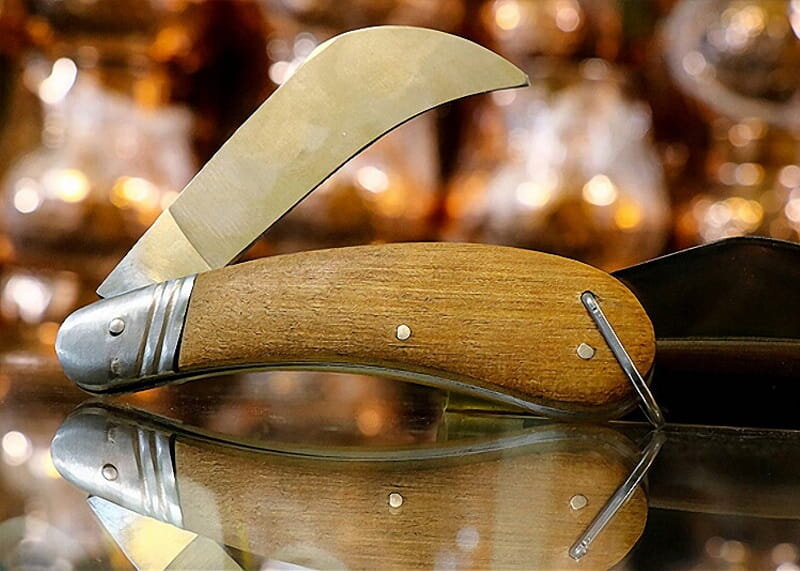Zanjan ceremony marks indigenous art of knifemaking

TEHRAN– On Saturday, a host of indigenous craftspeople and cultural heritage officials in Zanjan hold a special ceremony to mark knifemaking skills passed down from generation to generation in the west-central Iranian city.
According to organizers, the ceremony was aimed at promoting the time-honored craft, samples of which were discovered in an ancient salt mine in Zanjan.
There isn’t much information available about the history of this type of handicraft, but it can be inferred from historical records and travel accounts that Zanjan was a city where knives, swords, and daggers were massively produced beginning in the 17th century, and numerous knife-making workshops were established there.
Experts say Zanjan knives have been the most successful among the handmade products of other Iranian cities due to their design, cut, diversity, and durability.
Iron is the key component in the manufacture of handmade knives. Seashells, wood, fiber, ivory, and other materials are used to make the handle. Usually, the names of the knife makers are engraved into the blade. They embellish their creations with a variety of ornate elements, including ivory, seashell fragments, jewelry, gems, and filigree.
The most important tools used by the cutlers are hammers, sledgehammers, scissors, and kilns. To make a knife, first, the master heats the iron in the kiln. After it reaches the proper degree, it is forged into knife, sword, and dagger blades by the impact of the hammer. Then he skillfully creates the handle using materials like horns or ivory and attaches it to the blade. Finally, the blade is ground and chrome plated.
The knife makers of Zanjan usually carve their names into the blade. Gems, jewelry, filigree, pieces of seashells, and ivory are some of the ornaments they add to their products. From small decorative knives that are used as key chains to large swords, a wide range of products are made in the workshops.
The handle provides a chance for the artistry of their makers, who try to add to their beauty and uniqueness as much as possible. Characteristics such as spring-assisted-like opening, high sharpness of the blade, and very good grip are some of the traits of Zanjan knives.
Some cultural heritage fans believe the art of making handmade knives is somehow fallen into oblivion in Zanjan.
AFM
